
- Home
- Travel Packages
- Top Destination
-
Travel Attraction
By Category
Top Attraction

- Travel Agents
- Car Rentals
- Hotels
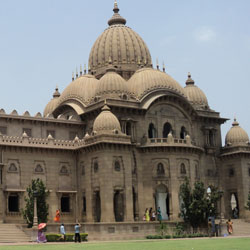
About The Belur Math Temple The Belur Math Temple, located in Belur near Kolkata, is a prominent place of worship and spiritual retreat for followers of the Ramakrishna Movement. The temple complex is a symbol of unity and harmony, bringing together people of different faiths and backgrounds under one roof. Architecture of Belur Math Temple The architecture of the Belur Math Temple is a blend of various styles, including Hindu, Islamic, and Christian influences. The main temple is built in the traditional Bengali style of architecture, with intricate carvings and sculptures that depict scenes from Hindu mythology. The temple's central dome is influenced by the Mughal style of architecture, while the surrounding buildings showcase a unique combination of European and Indian design elements. History The Belur Math Temple was established in 1899 by Swami Vivekananda, a disciple of the Indian saint Sri Ramakrishna. The temple was built as a tribute to Sri Ramakrishna and serves as the headquarters of the Ramakrishna Math and Ramakrishna Mission. Over the years, the temple has become a center of spiritual and cultural activities, attracting devotees and visitors from all over the world. Best Time To Visit The best time to visit the Belur Math Temple is during the annual celebrations of Sri Ramakrishna's birthday, which usually falls in February. During this time, the temple is adorned with lights and decorations, and special prayers and rituals are conducted to honor the saint's teachings. Visitors can witness the vibrant atmosphere and participate in the festivities that take place during this time. How To Reach The Belur Math Temple is easily accessible from Kolkata, which is located approximately 6 kilometers away. Visitors can take a taxi, bus, or train to reach the temple complex. The nearest railway station is Belur Math, which is well connected to Kolkata and other major cities in the region. From the railway station, it is a short walk to the temple complex. Significance Of The Belur Math Temple The Belur Math Temple holds great significance for followers of the Ramakrishna Movement and serves as a place of spiritual solace and enlightenment. The temple complex is not just a place of worship but also a center for social service, education, and cultural exchange. It stands as a symbol of unity and universal brotherhood, promoting the teachings of Sri Ramakrishna and Swami Vivekananda to the world. Overall, the Belur Math Temple is a place of great historical and cultural importance, attracting devotees and visitors alike with its beautiful architecture, serene surroundings, and profound spiritual atmosphere.
Explore More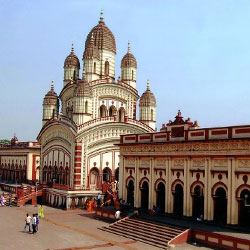
About The Kali Temple The Kali Temple, also known as Kalighat Kali Temple, is one of the most famous temples in Kolkata, India. It is dedicated to Goddess Kali, the Hindu goddess of time, creation, destruction, and power. The temple is located in the Kalighat area of Kolkata and is visited by thousands of devotees and tourists every year. Architecture of Kali Temple The Kali Temple's architecture is a unique blend of traditional Bengali style and modern design. The temple complex is spread over a large area and consists of a main temple building, several smaller shrines, a courtyard, and a pond. The main temple is adorned with intricate carvings and sculptures of Hindu gods and goddesses, and the central deity, Goddess Kali, is depicted in her fierce form, standing on Lord Shiva. History The history of the Kali Temple dates back to the 16th century when a small temple was built on the banks of the Adi Ganga river. Over the centuries, the temple was renovated and expanded several times, and the current structure was built in the early 19th century by the Sabarna Roy Choudhury family. The temple has since become a major pilgrimage site for devotees of Goddess Kali. Best Time To Visit The best time to visit the Kali Temple is during the festival of Kali Puja, which usually falls in October or November. The temple is beautifully decorated with lights, flowers, and colorful decorations during this time, and special prayers and rituals are performed to honor the goddess. Other auspicious times to visit the temple include Tuesdays and Saturdays, which are considered sacred days for worshipping Goddess Kali. How To Reach The Kali Temple is located in the Kalighat area of Kolkata, which is well-connected by road, rail, and air. The nearest railway station is Kalighat Metro Station, which is just a short walk away from the temple. The temple is also easily accessible by bus or taxi from any part of the city. For those coming from out of town, the Kolkata International Airport is the nearest airport, located about 20 kilometers away from the temple. Significance Of The Kali Temple The Kali Temple holds great significance for devotees of Goddess Kali, who believe that worshipping her can bring protection, prosperity, and spiritual fulfillment. The temple is also a popular tourist attraction, drawing visitors from all over the world who come to marvel at its stunning architecture and experience the vibrant culture and traditions of Kolkata. The Kali Temple is not just a place of worship but also a symbol of the rich heritage and deep-rooted spirituality of India. Overall, the Kali Temple in Kolkata is a must-visit destination for anyone seeking a spiritual experience or a glimpse into the colorful tapestry of Indian culture and tradition.
Explore More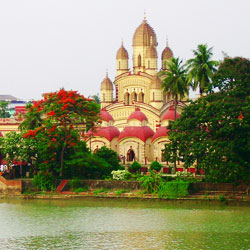
About The Dakshineswar Temple The Dakshineswar Temple is a famous Hindu temple located in Dakshineswar near Kolkata, West Bengal. It is dedicated to Goddess Kali and is known for its unique architecture and spiritual significance. The temple complex is situated on the eastern bank of the Hooghly River and is a popular pilgrimage site for devotees from all over India. Architecture of Dakshineswar Temple The Dakshineswar Temple was built in the traditional Bengali Navaratna style of architecture. The main temple is surrounded by 12 smaller shrines dedicated to different forms of the Goddess Kali. The temple complex also includes a large courtyard, a bathing ghat, and a temple dedicated to Lord Shiva. History The Dakshineswar Temple was built in 1855 by Rani Rashmoni, a wealthy philanthropist and devotee of Goddess Kali. The construction of the temple was supervised by Ramakrishna Paramahamsa, a renowned saint and spiritual leader. The temple gained fame due to the presence of Ramakrishna Paramahamsa, who attracted a large number of followers to the temple. Best Time To Visit The best time to visit the Dakshineswar Temple is during the annual festival of Kali Puja, which usually falls in October or November. The temple is beautifully decorated during this time, and special rituals and prayers are conducted in honor of the Goddess Kali. Visitors can witness cultural performances, processions, and other festivities during the festival. How To Reach The Dakshineswar Temple is easily accessible by road, rail, and waterways. It is located about 12 kilometers from Kolkata city center and can be reached by taxi, bus, or auto-rickshaw. The nearest railway station is Dakshineswar Railway Station, which is well-connected to Kolkata and other major cities in India. Visitors can also take a boat ride across the Hooghly River to reach the temple. Significance Of The Dakshineswar Temple The Dakshineswar Temple holds immense significance for devotees of Goddess Kali. It is believed that worshipping at the temple can help devotees overcome obstacles, attain spiritual liberation, and seek the blessings of the Divine Mother. The temple is also associated with the teachings of Ramakrishna Paramahamsa, who preached the message of universal love and harmony. In conclusion, the Dakshineswar Temple is not just a place of worship but a symbol of spiritual heritage and cultural richness. It continues to attract visitors and devotees from all walks of life, seeking solace, guidance, and blessings from the Divine. Whether you are a religious pilgrim or a curious traveler, a visit to the Dakshineswar Temple is sure to leave you in awe of its beauty and serenity.
Explore More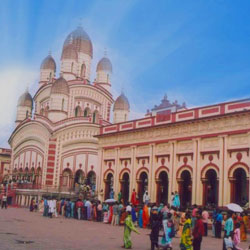
About The Kalighat Temple The Kalighat Temple, located in Kolkata, West Bengal, is one of the most well-known and revered temples in India. Dedicated to the Hindu goddess Kali, the temple attracts devotees from all over the country. The temple holds great significance in Hindu mythology and is considered a sacred place for worship. Architecture of Kalighat Temple The Kalighat Temple is a beautiful example of traditional Bengali temple architecture. The temple complex consists of a main shrine dedicated to Goddess Kali, surrounded by smaller shrines dedicated to various other deities. The temple is adorned with intricate carvings and sculptures, depicting scenes from Hindu mythology. The main sanctum of the temple houses a black stone idol of Goddess Kali, adorned with garlands of flowers and other offerings. The temple also features a large courtyard where devotees can offer prayers and participate in religious ceremonies. History The history of the Kalighat Temple dates back to ancient times. According to legend, the temple was originally a small hut built by a sage named Brahmananda. The sage discovered a hidden image of Goddess Kali in the jungle and decided to build a shrine in her honor. Over the years, the temple gained popularity and underwent several renovations and expansions. It became a center of pilgrimage for devotees seeking blessings from the powerful goddess. The temple has survived various natural calamities and invasions, standing as a symbol of resilience and faith. Best Time To Visit The best time to visit the Kalighat Temple is during the Navratri festival, which falls in the months of September or October. During this time, the temple is adorned with lights and decorations, and special ceremonies are held to honor the goddess. It is also recommended to visit the temple early in the morning or late in the evening to avoid the crowds and experience the peaceful atmosphere of the temple. The temple is open to visitors throughout the year, but it is best to check the temple timings before planning your visit. How To Reach The Kalighat Temple is easily accessible by various modes of transportation. The nearest railway station to the temple is Kalighat Metro Station, which is well connected to the rest of the city. Visitors can also take a taxi or a bus to reach the temple from any part of Kolkata. If you are traveling from outside the city, Netaji Subhas Chandra Bose International Airport is the nearest airport to the temple. From the airport, you can hire a taxi or take a bus to reach the temple conveniently. Significance Of The Kalighat Temple The Kalighat Temple holds immense significance in Hindu mythology and is believed to be one of the 51 Shakti Peethas, where different parts of the goddess Sati's body fell. The temple is considered a powerful place of worship, where devotees seek blessings for protection, prosperity, and well-being. Devotees visit the temple to offer prayers, perform rituals, and seek guidance from the goddess. The temple is also a popular destination for tourists interested in exploring the rich cultural and religious heritage of India. In conclusion, the Kalighat Temple in Kolkata is a sacred place that holds great spiritual and cultural significance. The temple's rich history, beautiful architecture, and peaceful ambiance make it a must-visit destination for anyone traveling to Kolkata. Plan your visit to the Kalighat Temple to experience the divine presence of Goddess Kali and seek her blessings for a prosperous life.
Explore More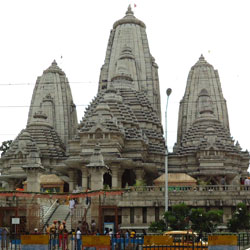
About The Birla Mandir Temple The Birla Mandir Temple, also known as the Lakshmi-Narayan Temple, is a beautiful Hindu temple located in Kolkata, West Bengal. It was built by the renowned industrialist Birla family in 1970 and is dedicated to Lord Vishnu (Narayan) and Goddess Lakshmi. The temple is famous for its stunning architecture, intricate carvings, and serene ambiance, making it a popular attraction for locals and tourists alike. Architecture of Birla Mandir Temple The Birla Mandir Temple is a fine example of traditional Indian temple architecture with a modern touch. The temple is made entirely of white marble, which reflects the sunlight and gives it a radiant glow. The main shrine houses beautifully sculpted idols of Lord Vishnu and Goddess Lakshmi, along with other deities. The intricate carvings on the walls and ceilings depict scenes from Hindu mythology, adding to the temple's grandeur. One of the highlights of the temple is the tall spire, or shikhara, that rises above the main sanctum sanctorum. The shikhara is adorned with intricate carvings and sculptures of various gods and goddesses, making it a sight to behold. The temple also features a large courtyard, where devotees can sit and meditate in peace, away from the hustle and bustle of the city. History The Birla Mandir Temple was commissioned by the Birla family, who were prominent industrialists and philanthropists in India. The construction of the temple began in 1970 and was completed in a short span of time. The Birla family wanted to create a place of worship that would be open to people of all castes and creeds, promoting unity and harmony among different communities. Since its inauguration, the Birla Mandir Temple has become a symbol of spirituality and peace in Kolkata, attracting thousands of devotees and tourists every year. The temple continues to be maintained and managed by the Birla family, who ensure that it remains a sacred and serene place for all who visit. Best Time To Visit The Birla Mandir Temple is open to visitors throughout the year, but the best time to visit is during the festivals of Diwali and Janmashtami. These festivals are celebrated with great fervor at the temple, with elaborate decorations and special prayers being offered to the deities. Visiting the temple during these festivals gives visitors a chance to experience the vibrant atmosphere and witness the rich traditions of Hindu culture. The temple is also less crowded during weekdays, making it a peaceful retreat for those seeking solace and spiritual rejuvenation. How To Reach The Birla Mandir Temple is located in the heart of Kolkata, making it easily accessible from all parts of the city. The nearest railway station is Howrah Junction, which is well connected to major cities across India. Visitors can also take a taxi or auto-rickshaw from any part of Kolkata to reach the temple. For those traveling by air, the Netaji Subhas Chandra Bose International Airport is the closest airport to the temple, with regular flights to and from major cities in India and abroad. Once at the airport, visitors can hire a taxi or take a bus to reach the temple in a convenient and hassle-free manner. Significance Of The Birla Mandir Temple The Birla Mandir Temple holds great significance for the people of Kolkata and devotees of Lord Vishnu and Goddess Lakshmi. It is not just a place of worship, but also a symbol of spirituality, unity, and peace. The temple's serene ambiance and beautiful architecture make it a popular destination for those seeking spiritual solace and inner peace. Visitors to the temple can offer prayers, meditate, or simply admire the beauty of the surroundings. The temple also hosts various cultural and religious events throughout the year, further enriching the spiritual experience of its visitors. Whether you are a devotee or a tourist, a visit to the Birla Mandir Temple is sure to leave you feeling uplifted and inspired.
Explore More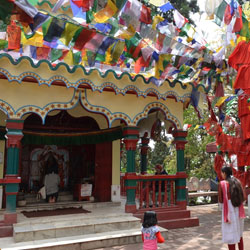
About The Mahakal Temple Located in Darjeeling, West Bengal, the Mahakal Temple is a popular Hindu temple dedicated to Lord Shiva. Situated at an altitude of 8,146 feet, the temple offers a breathtaking view of the snow-capped mountains and lush green surroundings. The temple holds great religious significance and is visited by devotees from all over the country. Architecture of Mahakal Temple The Mahakal Temple boasts traditional Indian architecture with intricate designs and beautiful sculptures. The temple is adorned with colorful paintings and carvings that depict mythological stories. The main sanctum sanctorum houses the idol of Lord Shiva in the form of Mahakal, which is worshipped by the devotees with great reverence. History The history of the Mahakal Temple dates back to the late 18th century when it was built by Lama Dorje Rinzing, a Buddhist monk. The temple was initially constructed as a meditation center for the Buddhist monks, but later it was transformed into a Hindu temple dedicated to Lord Shiva. Over the years, the temple underwent several renovations and expansions, making it the magnificent structure that it is today. Best Time To Visit The best time to visit the Mahakal Temple is during the months of March to May and September to November when the weather is pleasant and the views are clear. It is advisable to avoid visiting the temple during the monsoon season as the region experiences heavy rainfall, which can make the journey difficult. How To Reach The Mahakal Temple is easily accessible by road from Darjeeling town. Visitors can hire a taxi or take a shared jeep to reach the temple, which is located around 3 kilometers away from the main town. The journey to the temple is scenic and offers stunning views of the surrounding mountains and valleys. Significance Of The Mahakal Temple The Mahakal Temple holds great religious significance for the devotees, who believe that worshipping Lord Shiva at this sacred place can fulfill their wishes and bring prosperity in their lives. The temple also serves as a center for spiritual enlightenment and meditation, attracting seekers and devotees who seek solace and peace in the serene surroundings of the temple. In conclusion, the Mahakal Temple in Darjeeling is a divine abode of Lord Shiva that attracts devotees and tourists alike with its stunning architecture, rich history, and spiritual significance. Visiting this holy place is not just a religious experience but also an opportunity to connect with nature and find inner peace in the lap of the Himalayas.
Explore More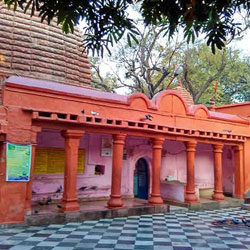
About The Maa Kalyaneshwari Temple The Maa Kalyaneshwari Temple is a revered Hindu temple located in the town of Asansol in Bardhaman, West Bengal. Dedicated to the goddess Kalyaneshwari, an incarnation of Goddess Kali, the temple holds significant religious importance for devotees in the region. The temple attracts a large number of pilgrims and tourists throughout the year who come to seek the blessings of the goddess. Architecture of Maa Kalyaneshwari Temple The Maa Kalyaneshwari Temple is known for its awe-inspiring architecture that showcases a perfect blend of traditional and modern elements. The temple features intricate carvings and sculptures that adorn its walls, depicting various mythological scenes and deities. The main sanctum sanctorum of the temple houses the idol of Maa Kalyaneshwari, adorned with beautiful flowers and ornaments. The temple complex also includes smaller shrines dedicated to other Hindu gods and goddesses, adding to its grandeur. History The history of the Maa Kalyaneshwari Temple dates back several centuries when the region was under the rule of various dynasties. It is believed that the temple was constructed by a devout ruler to honor the goddess and seek her blessings for prosperity and protection. Over the years, the temple has undergone several renovations and additions, making it a prominent religious site in the area. Best Time To Visit The best time to visit the Maa Kalyaneshwari Temple is during the festive season, particularly during Navratri and Diwali, when the temple premises are beautifully decorated and vibrant with celebrations. Additionally, the winter months from October to February are also considered ideal for visiting the temple, as the weather is pleasant and conducive for sightseeing. How To Reach The Maa Kalyaneshwari Temple is easily accessible by road, rail, and air. The nearest airport is Netaji Subhash Chandra Bose International Airport in Kolkata, which is approximately 200 kilometers away from Bardhaman. The temple can also be reached by train, with Asansol Junction being the nearest railway station. For those traveling by road, Bardhaman is well-connected to major cities in West Bengal via a network of highways and roads. Significance Of The Maa Kalyaneshwari Temple The Maa Kalyaneshwari Temple holds immense significance for devotees who believe in the protective and nurturing powers of the goddess. It is believed that seeking the blessings of Maa Kalyaneshwari can bring prosperity, peace, and happiness to one's life. The temple also serves as a place of solace and spiritual refuge for those facing challenges and seeking guidance. The sacred atmosphere of the temple, coupled with the devotion of the worshippers, creates a powerful energy that is palpable to all who visit. Overall, the Maa Kalyaneshwari Temple in Bardhaman is a symbol of faith, devotion, and cultural heritage, drawing people from all walks of life to experience its divine presence and seek blessings for a better future.
Explore More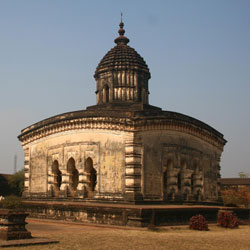
About The Lalji Temple in Bishnupur The Lalji Temple, located in the town of Bishnupur in the Bankura district of West Bengal, is a prominent Hindu temple dedicated to Lord Krishna. The temple is known for its exquisite terracotta artwork, which adorns the walls and facades of the structure. Architecture of Lalji Temple The Lalji Temple showcases the typical terracotta style of architecture that is characteristic of the temples in Bishnupur. The outer walls of the temple are embellished with intricate terracotta panels depicting scenes from Hindu epics such as the Ramayana and Mahabharata. The temple has a single tower with a curved roof, typical of the Bengal style of temple architecture. History The Lalji Temple was built in the 17th century during the reign of the Malla rulers of Bishnupur. The Malla kings were known for their patronage of the arts, and they commissioned the construction of several temples in the region, including the Lalji Temple. The temple stands as a testament to the rich cultural heritage of Bishnupur and the artistic prowess of the craftsmen of that era. Best Time To Visit The best time to visit the Lalji Temple is during the winter months, from November to February, when the weather is pleasant and conducive to exploring the temple complex. The annual Bishnupur Mela, held in December, is also a great time to visit the temple and experience the vibrant cultural festivities of the region. How To Reach The Lalji Temple is easily accessible by road from nearby cities such as Kolkata and Durgapur. Bishnupur is well-connected by a network of buses and taxis, making it convenient for visitors to reach the temple. The nearest railway station is the Bishnupur Railway Station, which is located just a few kilometers away from the temple. Significance Of The Lalji Temple The Lalji Temple holds great religious significance for the devotees of Lord Krishna. The temple is a place of worship and pilgrimage for those seeking the blessings of the deity. The intricate terracotta artwork adorning the temple walls is not just a visual delight but also serves as a medium for depicting the various stories and teachings from Hindu mythology. In conclusion, the Lalji Temple in Bishnupur is a must-visit destination for anyone interested in exploring the rich cultural heritage and artistic legacy of Bengal. The temple's stunning architecture and intricate terracotta artwork make it a unique and mesmerizing sight to behold. Whether you are a history buff, a religious pilgrim, or simply a lover of art and architecture, a visit to the Lalji Temple is sure to leave you enchanted and inspired.
Explore More
About The Kalachand Temple The Kalachand Temple, located in the town of Bishnupur in the state of West Bengal, India, is a famous Hindu temple dedicated to Lord Krishna. It is a significant pilgrimage site for devotees of Lord Krishna and is known for its beautiful architecture and intricate terracotta artwork. Architecture of Kalachand Temple The Kalachand Temple is constructed in the traditional Bengali style of architecture known as the terracotta temple. The temple is built using bricks and laterite stones, with intricate terracotta panels adorning the walls of the temple. These terracotta panels depict scenes from Hindu mythology, including stories from the life of Lord Krishna. The temple complex consists of a sanctum sanctorum where the idol of Lord Krishna is enshrined, surrounded by a covered verandah with pillars and a large courtyard. The temple's unique architecture and exquisite terracotta artwork make it a popular tourist attraction in Bishnupur. History The Kalachand Temple was built in the 17th century by the Malla King Raghunath Singh. The temple was dedicated to Lord Krishna, who is also known as Kalachand. The Malla rulers of Bishnupur were great patrons of art and culture, and they commissioned the construction of several temples in the region, including the Kalachand Temple. Over the centuries, the temple has undergone several renovations and restorations to preserve its architectural beauty and historical significance. Today, the Kalachand Temple stands as a testament to the rich cultural heritage of Bishnupur and attracts visitors from all over the world. Best Time To Visit The best time to visit the Kalachand Temple in Bishnupur is during the winter months from October to February. The weather during this time is pleasant and ideal for exploring the temple complex and its surroundings. The annual Rash Mela festival, which celebrates the divine love of Radha and Krishna, is also held near the temple during this time, making it a popular time to visit. It is important to note that Bishnupur can get quite hot and humid during the summer months, so it is advisable to avoid visiting the temple during this time. The monsoon season, from June to September, can also bring heavy rainfall to the region, making it less than ideal for sightseeing. How To Reach The Kalachand Temple in Bishnupur is easily accessible by road and rail. Bishnupur is well-connected to major cities in West Bengal and other parts of the country by a network of highways and railways. The nearest airport to Bishnupur is in Kolkata, which is approximately 150 kilometers away. Visitors can also take a train to Bishnupur Railway Station, which is located in the town and is well-connected to Kolkata and other major cities. From the railway station, the Kalachand Temple is just a short drive away, and visitors can take a taxi or auto-rickshaw to reach the temple complex. Significance Of The Kalachand Temple The Kalachand Temple holds great religious and cultural significance for devotees of Lord Krishna. The temple is believed to be a sacred place where devotees can offer their prayers and seek the blessings of Lord Krishna. The beautiful terracotta artwork on the walls of the temple also adds to its significance as a work of art and a symbol of the rich cultural heritage of Bishnupur. Many visitors to the Kalachand Temple are also drawn to its serene and peaceful surroundings, making it a popular destination for spiritual seekers and tourists alike. The temple's unique architecture and historical importance make it a must-visit attraction for anyone exploring the town of Bishnupur and its rich cultural heritage.
Explore More
About The Radhashyam Temple in Bishnupur The Radhashyam Temple is a significant religious site located in the town of Bishnupur in the Bankura district of West Bengal, India. It is dedicated to Lord Krishna, who is worshipped here in the form of Radha and Shyam, hence the name Radhashyam Temple. The temple is known for its exquisite architecture and intricate terracotta work, making it a popular tourist destination for art and history enthusiasts. Architecture of Radhashyam Temple The Radhashyam Temple is a prime example of the terracotta temple architecture that Bishnupur is renowned for. The temple stands tall with its ornate carvings and detailed terracotta panels that depict scenes from Hindu mythology, folklore, and everyday life. The temple's pyramid-shaped roof, intricate arches, and intricate terracotta work on the walls are a sight to behold. History The Radhashyam Temple was constructed in the 17th century during the reign of the Malla kings who were patrons of art and culture. The temple was built to commemorate Lord Krishna and his eternal love Radha. Over the centuries, the temple has undergone renovations and restoration work to preserve its architectural beauty and cultural significance. Best Time To Visit The best time to visit the Radhashyam Temple in Bishnupur is during the winter months from November to February when the weather is pleasant and suitable for exploring the town and its historical sites. The annual Bishnupur Festival held in December is also a great time to visit the temple and witness cultural performances and art exhibitions. How To Reach Bishnupur is well-connected by road and rail to major cities like Kolkata and Durgapur. The nearest airport is Netaji Subhas Chandra Bose International Airport in Kolkata, which is approximately 140 kilometers away. Visitors can also take a train to Bishnupur Railway Station, which is well-connected to Kolkata and other parts of the state. Local taxis and auto-rickshaws are available for transportation within the town. Significance Of The Radhashyam Temple The Radhashyam Temple holds immense religious and cultural significance for the people of Bishnupur and devotees of Lord Krishna. The temple is not only a place of worship but also a symbol of the rich artistic heritage of the region. The intricate terracotta work on the temple walls is a testimony to the skilled craftsmanship of the local artisans. Visitors to the temple can experience a sense of peace and spirituality as they admire the beautiful architecture and immerse themselves in the divine aura of the place. In conclusion, the Radhashyam Temple in Bishnupur is a must-visit destination for those interested in history, art, and culture. The temple's architectural beauty, rich history, and religious significance make it a unique and captivating place that leaves a lasting impression on visitors. Experience the charm of the Radhashyam Temple and delve into the cultural tapestry of Bishnupur as you explore this gem of a heritage site.
Explore More
About The Jor Mandir Temples The Jor Mandir Temples are a group of twin temples located in Bishnupur, a town in the Bankura district of West Bengal, India. These temples are dedicated to Lord Krishna and were built during the 17th century by the Malla kings. Architecture of Jor Mandir Temples The Jor Mandir Temples are known for their exquisite terracotta artwork that adorns the walls of the temples. The intricate carvings depict scenes from Hindu epics like the Ramayana and Mahabharata, as well as various aspects of daily life during that period. The temples are built in the traditional Ekaratna style, with a square base and a single tower in the center. History The Jor Mandir Temples were built by the Malla kings who ruled Bishnupur during the 17th century. The temples were constructed as a part of the royal patronage of art and culture in the region. The intricate terracotta artwork on the walls of the temples is a testament to the artistic prowess of the craftsmen of that era. Best Time To Visit The best time to visit the Jor Mandir Temples is during the winter months, from October to February, when the weather is pleasant and ideal for exploring the temples and the surrounding areas. The annual Bishnupur Mela, which takes place in December, is also a great time to visit the temples and experience the local culture and traditions. How To Reach Bishnupur is well-connected by road and rail to major cities like Kolkata and Asansol. The nearest railway station is Bishnupur Railway Station, which is located about 2 kilometers away from the Jor Mandir Temples. The town is also well-served by buses and taxis, making it easy to reach the temples from nearby cities and towns. Significance Of The Jor Mandir Temples The Jor Mandir Temples are not only a religious site but also a cultural and historical treasure. The intricate terracotta artwork on the walls of the temples is a fine example of Bengal's rich artistic heritage. The temples also stand as a symbol of the Malla kings' patronage of art and culture during their rule in Bishnupur. In conclusion, the Jor Mandir Temples in Bishnupur are a must-visit destination for anyone interested in history, art, and culture. The exquisite terracotta artwork, the architectural beauty, and the rich history of these temples make them a unique and captivating place to explore. Whether you are a history buff, an art enthusiast, or a spiritual seeker, the Jor Mandir Temples are sure to leave a lasting impression on you.
Explore More
About The ISKCON Temple Siliguri The ISKCON Temple in Siliguri, also known as Sri Sri Radha Madhav Sundar Mandir, is a spiritual haven for devotees and tourists alike. It is a part of the International Society for Krishna Consciousness (ISKCON) founded by A. C. Bhaktivedanta Swami Prabhupada in 1966. The temple complex is spread across a vast area and is dedicated to Lord Krishna and Radha. It serves as a hub for spiritual activities, cultural programs, and social welfare initiatives. Architecture of ISKCON Temple Siliguri The architecture of the ISKCON Temple in Siliguri is a beautiful blend of traditional Indian temple design and modern aesthetics. The temple's main structure is adorned with intricate carvings and colorful motifs that depict various scenes from Hindu mythology. The main altar houses the deities of Lord Krishna and Radha, along with other important figures in the Hare Krishna movement. The temple also features a spacious prayer hall, a meditation room, and a serene garden for devotees to relax and meditate. History The ISKCON Temple in Siliguri was established in the early 1990s by a group of dedicated followers of A. C. Bhaktivedanta Swami Prabhupada. Over the years, the temple has grown in popularity and has become a prominent spiritual destination in the region. The temple has played a significant role in spreading the teachings of Lord Krishna and promoting a lifestyle based on spiritual principles and devotion. Best Time To Visit The best time to visit the ISKCON Temple in Siliguri is during the major festivals such as Janmashtami (Lord Krishna's birthday) and Radhastami (Radha's appearance day). These festivals are celebrated with great pomp and show, and devotees from all over the country come to participate in the festivities. The temple is beautifully decorated during these times, and the atmosphere is filled with joy and devotion. How To Reach The ISKCON Temple in Siliguri is located in the heart of the city and is easily accessible by road. The temple is well-connected to the main bus stand and railway station, making it convenient for devotees and tourists to visit. Siliguri is well-connected to major cities in India by air, rail, and road, making it easy for travelers to reach the temple from different parts of the country. Significance Of The ISKCON Temple Siliguri The ISKCON Temple in Siliguri holds great significance for the followers of the Hare Krishna movement and for spiritual seekers in general. The temple serves as a center for spiritual enlightenment, cultural enrichment, and social welfare activities. It offers various programs such as bhajans, kirtans, discourses, and yoga classes to help individuals connect with their inner selves and cultivate a deeper understanding of life and spirituality. The temple also runs charitable programs to help the underprivileged and promote a sense of community service among its members. Overall, the ISKCON Temple in Siliguri is a place of peace, harmony, and devotion where visitors can experience a sense of spiritual upliftment and connect with the divine presence of Lord Krishna and Radha.
Explore More6N Gangtok - Darjeeling - Mirik Tour
7 Days/ 6 Night
Gangtok - Darjeeling - Mirik
6D Gangtok - Darjeeling Tour
6 Days/ 5 Night
Gangtok - Darjeeling
8D Gangtok - Lachen - Lachung - Darjeeling Tour
8 Days/ 7 Night
Gangtok - Darjeeling - Lachung - Lachen
4D Darjeeling - Mirik Tour Package
4 Days/ 3 Night
Darjeeling - Mirik
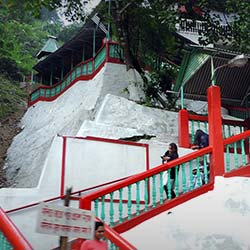
About The Sevoke Kali Mandir Temple The Sevoke Kali Mandir Temple is a renowned Hindu temple located in Sevoke, a small town near Siliguri in the state of West Bengal, India. Dedicated to the goddess Kali, this sacred place of worship attracts devotees and tourists alike with its peaceful ambiance and stunning architecture. Architecture of Sevoke Kali Mandir Temple The Sevoke Kali Mandir Temple is a fine example of traditional Bengali temple architecture. The temple is built in the traditional "nava-ratna" style, featuring nine spires that symbolize the nine forms of Goddess Durga. The intricate carvings on the walls and pillars, along with the vibrant colors used in the decorations, add to the temple's grandeur. The main sanctum sanctorum houses a beautiful idol of Goddess Kali, adorned with flowers and jewelry. History The Sevoke Kali Mandir Temple has a rich historical significance, dating back to the early 18th century. It is said that the temple was established by a saint who had a vision of Goddess Kali directing him to build a temple at the spot where the idol was found. Over the years, the temple has undergone several renovations and improvements, but its spiritual essence has remained unchanged. Best Time To Visit The best time to visit the Sevoke Kali Mandir Temple is during the festive season, especially during Navratri and Diwali when the temple is adorned with lights, flowers, and decorations. The atmosphere during these times is vibrant and festive, with devotees flocking to the temple to seek blessings from the goddess. How To Reach The Sevoke Kali Mandir Temple is easily accessible by road from Siliguri, which is well-connected to major cities in India. Visitors can hire a taxi or take a local bus to reach the temple, which is located just a few kilometers away from the main town. The nearest airport is Bagdogra Airport, which is located about 20 kilometers away from the temple. Significance Of The Sevoke Kali Mandir Temple The Sevoke Kali Mandir Temple holds immense significance for the devotees who believe that worshipping the goddess brings protection, prosperity, and well-being. Many devotees also visit the temple to seek guidance and blessings from Goddess Kali during challenging times in their lives. The serene surroundings of the temple provide a peaceful retreat for those looking to connect with their spiritual side and find solace in the divine presence of the goddess.
Explore More
Gangasagar is a village and a gram panchayat within the jurisdiction of the Sagar police station in the Sagar CD block in the Kakdwip subdivision of the South 24 Parganas district in the Indian state of West Bengal.
Explore More